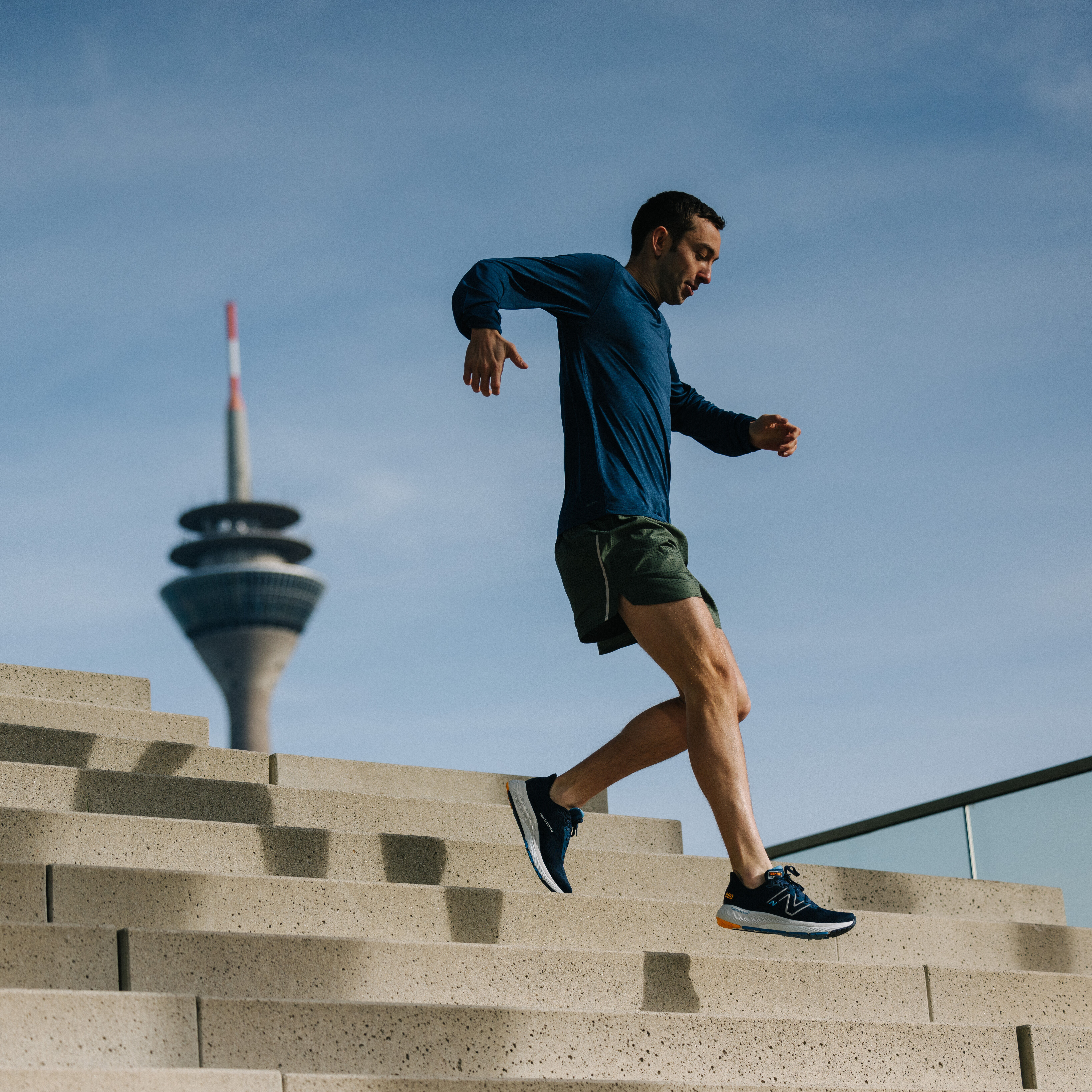
Every sport comes packed with its own peculiar terminology and terms, and running is no different. However, if you want to get the most out of it, it can pay you back big time to learn a few running terms. That way you can maximise your training benefits, select the right running gear with confidence and enjoy all types of running to the fullest.
Common running terms and terminology
Speaking the language of running can make a huge difference to your enjoyment of it. Dipping into a running glossary can also help you to feel less left out at the running club when everyone is discussing their fartleks, their PBs, and when they last bonked (trust us on this last one - it's not necessarily
what you think it is). So, don't be nervous. Come with us as we jog through some of the more common running lingo, along with some of the more useful race terms, runners' abbreviations and more.
Running terms glossary
Cadence: How many steps or strides you take per minute. It's a useful guide to help you perfect your running form and pace and avoid unnecessary injuries. 180 steps per minute is the typical guideline, and anything above 170 is good. However, changing your running technique to improve your cadence can be a slow process, so these figures are only guidelines. You should do what works for you though. Typically the more experienced you are, your cadence naturally improves as you become a more efficient runner.
Carb loading: Carb loading is a process in which you increase your glycogen levels to prepare for a long-distance run, such as a marathon. This will help to delay fatigue and 'hitting the wall’ and improve your performance. Aim to take on more carbohydrates from around 48 hours before the race and build them into regular meal patterns to avoid bloating.
Chafing: Chafing is a painful stinging sensation caused by friction between skin and skin (e.g., your thighs rubbing together) or fabric and skin (e.g., your running shirt rubbing against your skin and aggravating it). Applying anti-chafing cream or an anti-friction stick will help you avoid chafing in the first place.
Couch to 5K: Designed to help absolute beginner runners to start running. It's for anyone who wants to try running for the first time, a 6-week running plan that helps beginners to build up their fitness and stamina while getting used to a running routine.
Cushioning: Cushioning in a running shoe is the section of the sole that absorbs the impact shock when your foot hits the ground. Runners who suffer from joint problems may choose running shoes with more cushioning, such as the New Balance Fresh Foam X More v4, Fresh Foam 1080, or FuelCell performance shoes to benefit from greater shock absorption.
Endorphins: Endorphins are hormone chemicals released by your body to counter stress or pain. Released during pleasurable activities such as running and other forms of exercise, they can help you feel good.
Fartlek: Another piece of running terminology that sounds a little rude but is, in fact, quite innocent is 'fartlek'. It translates as 'speed play' and is a combined form of interval running and speed training invented by Swedish runner Göster Holmér in the 1930s. It helps to improve your running speed and endurance by varying your pace during a run.
Footstrike (forefoot, midfoot, heel strike): This refers to which part of your foot hits the ground first when you run or step; forefoot (toes and/or ball of foot), midfoot (the centre of your foot), or rearfoot (heel). This varies from runner to runner.
Gait: Running gait refers to the motions your legs and feet go through as you run. It includes how and where your footstrike occurs, as well as how far apart from each other your feet land. Gait analysis gives you the opportunity to see how you run and provides you with the information you need when choosing a running shoe.
Hitting the wall: This is running slang for the feeling when you're suddenly so fatigued during your run that you really begin to struggle. Your legs turn to jelly, and you feel nauseous. It's usually something you'd experience on a longer run; in a 26.2 mile marathon, it can often happen around the 22 mile mark, for instance.
Interval running: Also known as 'intervals', this is a form of training that involves fast bursts of running along with periods of different speeds that could include walking, but never a complete standstill.
Midsole: The midsole is an important part of all running shoes that affects how the impact from your foot hitting the ground is distributed through your feet, legs and body. The midsole is found between the insole and outsole of running shoes. You'll see some shoes with more cushioning than others such as New Balance Fresh Foam trainers, or other features such as carbon plates which feature in New Balance FuelCell SuperComp shoes.
Neutral: A neutral runner's foot lands in such a way that it doesn't require any extra corrective support or stabilisation. See also 'pronation'.
Outsole: The part of your running shoe that makes contact with the ground, located below the midsole.
Plantar fascia: The plantar fascia is a section of your foot that connects your toes to your heel bone. If it gets inflamed (a condition called 'plantar fasciitis') it can cause pain in the arch and heel. Treatments include icing, stretching, and wearing cushioned shoes.
Pronation: Pronation is the way your foot rolls when it hits the ground. Overpronation occurs when your foot rolls too far inwards, while supination is when your foot rolls too far outwards. Wearing the right kind of running shoe can help to avoid injury in both cases.
Recovery run: A recovery run is a lighter, gentler, and slower run than typical training runs in your schedule and can help you hit your overall target mileage. They're just as important to your performance as harder and faster runs and should be included in your running plan.
Rest day: A day free from running or any other exercise - no cross or strength training, spin, or jogging. A day that helps your body recover for the next scheduled run in your plan.
Runner's high: One of the more common running phrases that describes the natural and addictive feeling of elation experienced either during or after a run. It's caused by endorphins and can help to push you through the harder parts of a race.
Splits: The time taken to complete sections of your total run - effectively splitting it into portions. For example, you could split a 10K run into 10x 1km splits, 2x 5km splits, or 4x 2.5km splits. A negative split is when you complete a split faster than any of the splits preceding it during your run.
Strides: An exercise drill in bursts of between 15-30 seconds, which involves splitting the total time into sections of acceleration and deceleration to increase stride length. It can also be added into the middle of an easy run as part of your training.
Taper: A period during a race training plan where the intensity and volume of the runs decreases, usually in the final weeks before the big day. The idea is to run less, preserve energy, and be fully recovered from training in time for the main event.
Upper: The upper is the eye-catching top layer of any running shoe. It includes sections such as the tongue and laces, which can be adjusted for the best possible fit, and the toe box, which is where your toes should have ample space to swell as they warm up during running.
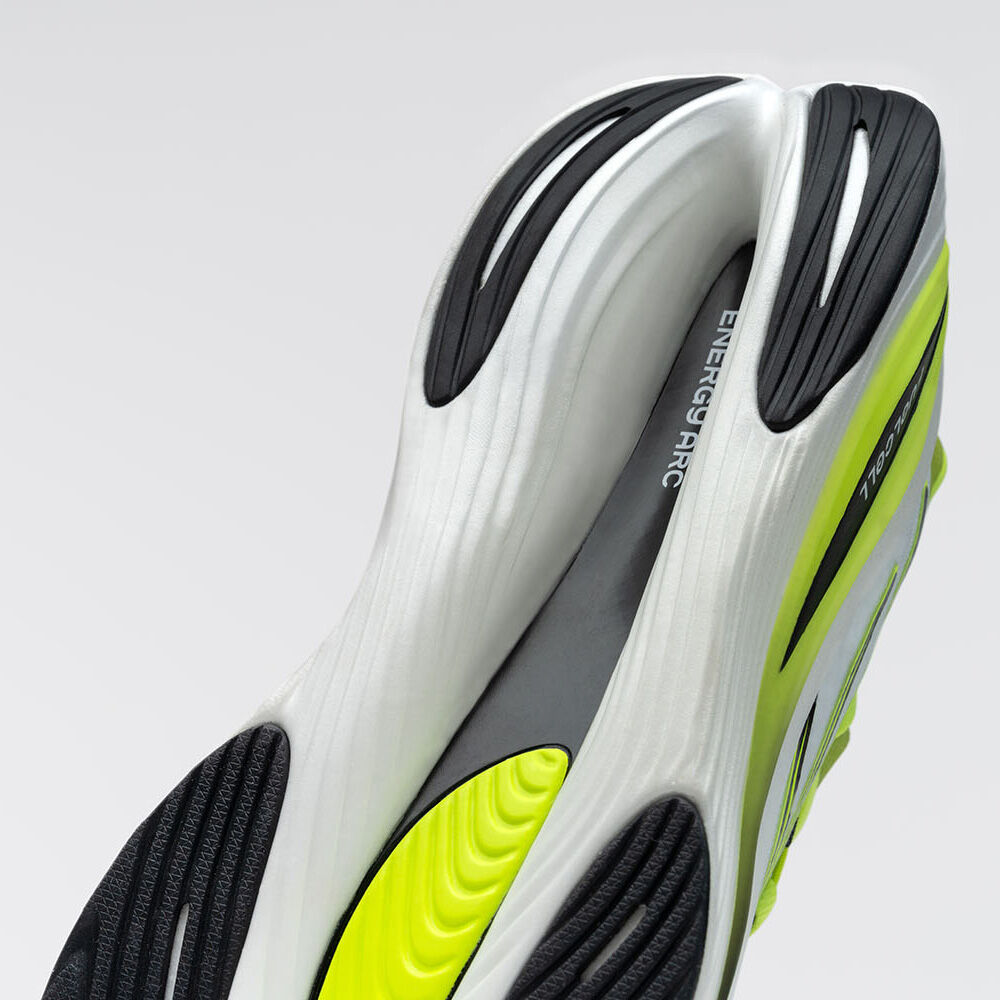
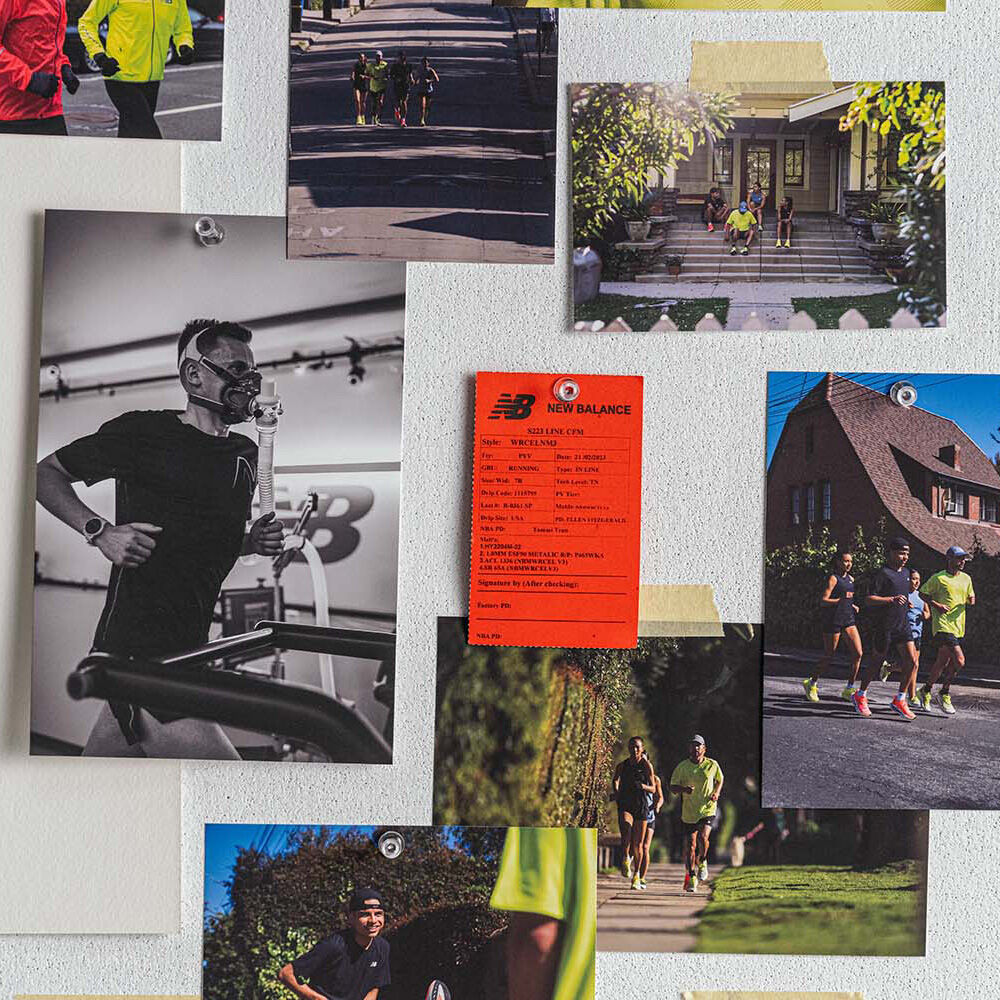
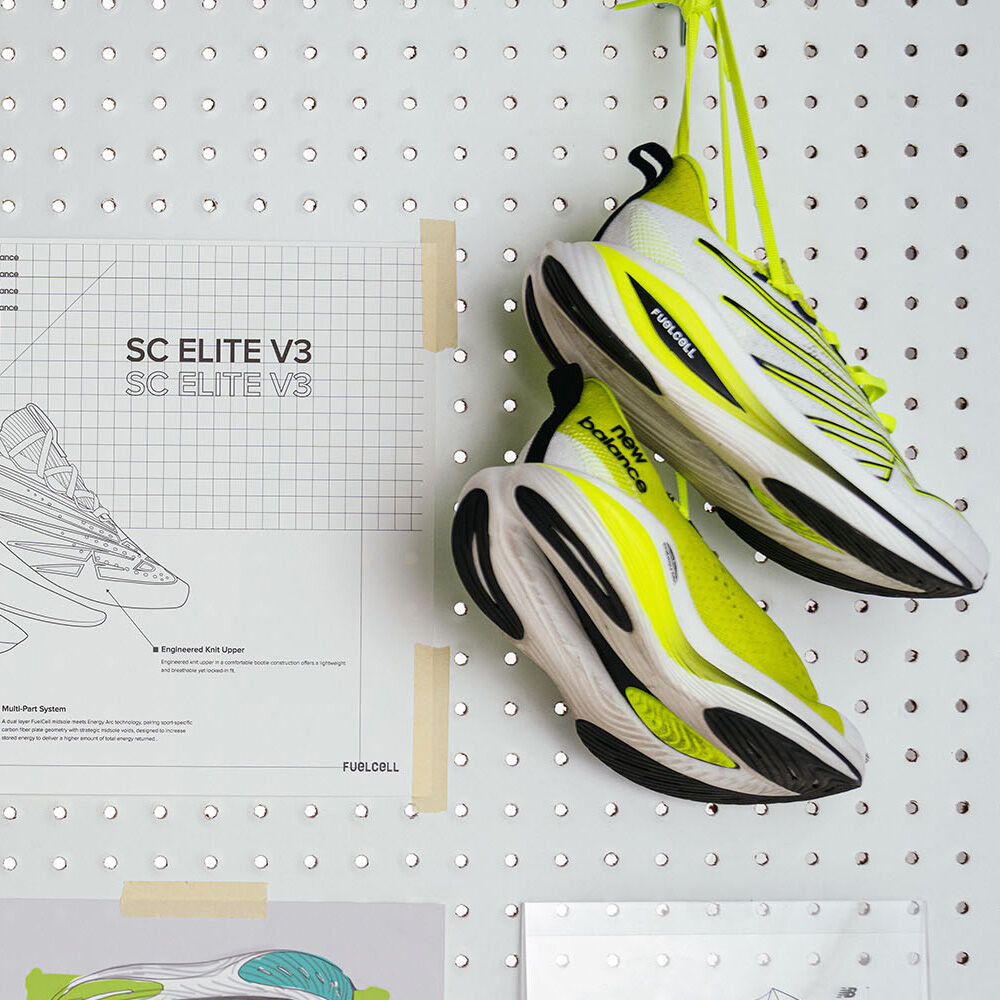
Race terms explained
5K: A race of 5 kilometres in length.
10K: A race of 10 kilometres in length.
Bib: Paper worn by runners on their chest to display their registration number, and often their name. It contains an electronic chip to track their time.
Chip time: The time between crossing the official starting line and finish line is recorded by the chip in your bib. Due to the large number of competitors at big races, there's a delay between the starting gun and when you actually cross the starting line.
Half-marathon: A race of 13.1 miles in length (21.1km).
Marathon: A race of 26.2 miles in length (42.2km).
Pacer: Also known as a 'pacesetter', 'pace runner', or 'rabbit', this is an experienced runner who sets the pace during a race, usually wearing a large sign with a predicted finish time on it. Runners can run with the pace runner at this pace with the aim of finishing in that time.
Ultra-marathon: A race that is longer than the 26.2 mile marathon distance.
Running acronyms
CR - Course record: fastest time on a running course
DNF - Did not finish: Started the race, but didn't complete it
DNS - Did not start: A runner who registered for a race, but didn't start it
DOMS - Delayed onset muscle soreness: Muscle pain that occurs 24-48 hours after a run
LSR - Long slow run: Also known as LSD (long slow distance), a run to build stamina
NR - National record: A nation's fastest runner at a particular distance or event
PB - Personal best: Also known as PR (personal record), your fastest running time over a particular distance
S&C - Strength and conditioning: Using bodyweight or resistance exercises to improve strength and reduce the risk of injury while running
WR - World record: The fastest recorded time in the world at a particular distance
Types of running
Training runs
Tempo: A run that's usually part of a training plan and involves running steadily at a challenging pace and maintaining it over a specific time or distance.
Threshold: Similar to tempo running, threshold running involves running at a pace that you can hold for one hour. It should feel difficult but comfortable. You should be able to continue running at this speed without stopping. A tempo run is slightly slower than this pace and allows you to run further than at your threshold level.
Running types
Easy run: A gentle run at a pace where you could easily chat and have a conversation.
Fell running: Traditionally a British sport that takes place on rough, hilly terrain, often without visible trails to follow. It involves steep climbs and tough descents and can range from anywhere between 3-25 miles in length.
Off-road running: Any run not on recognised road surfaces. Both fell running and trail running are types of off-road running. Give careful consideration to what to wear running when going off-road. Trail running shoes such as the New Balance FuelCell Summit Unknown v4 and DynaSoft Nitrel v5 are just the job for running off-road.
Trail run: A run on an unpaved surface but which is easier to follow than a fell run. Usually follows a trail such as a gravel track, woodland path or hiking route and is clearly marked. Shoes such as the New Balance Fresh Foam X Hierro v7 and Fresh Foam X More Trail v2 are perfect for trail running.

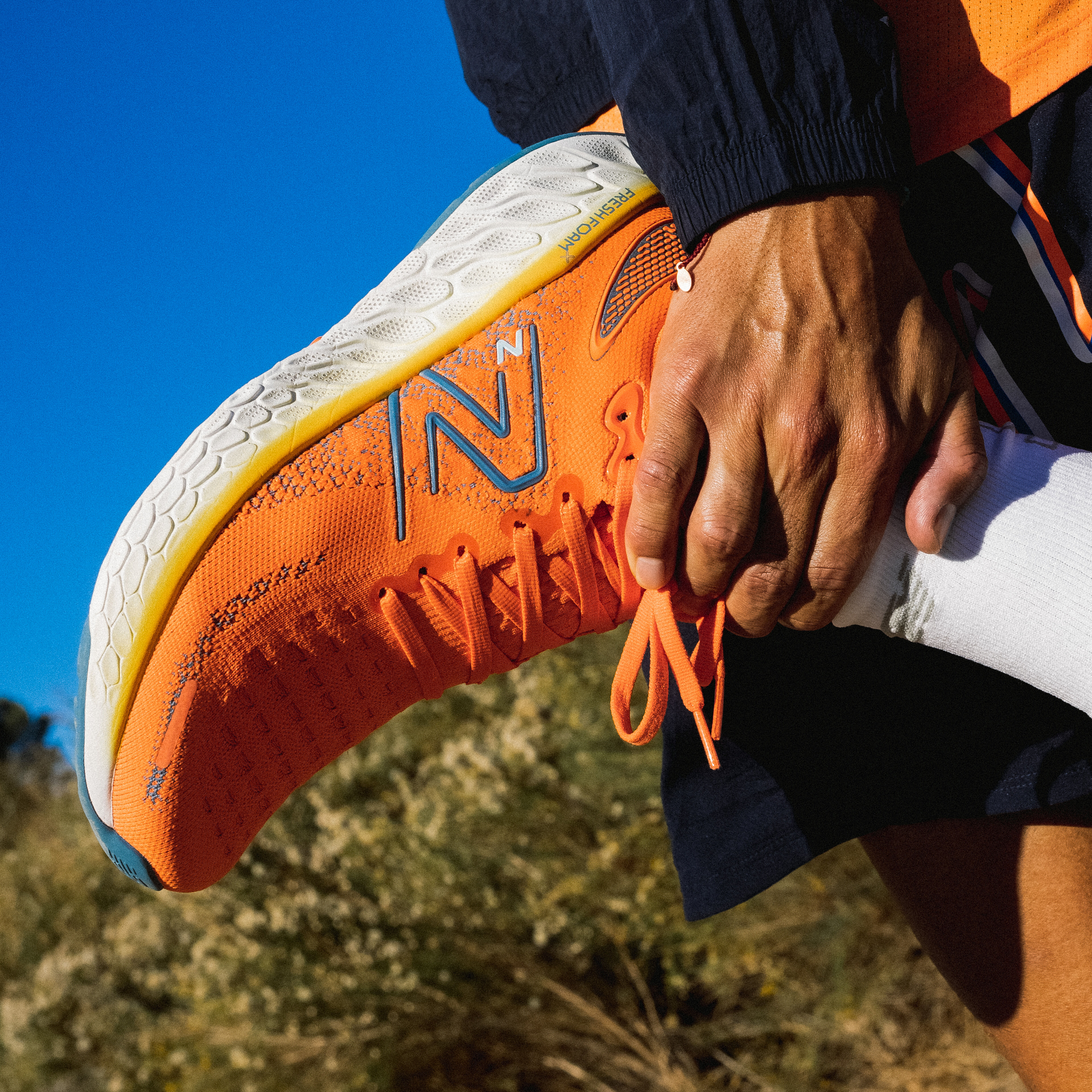
-square.jpg)
